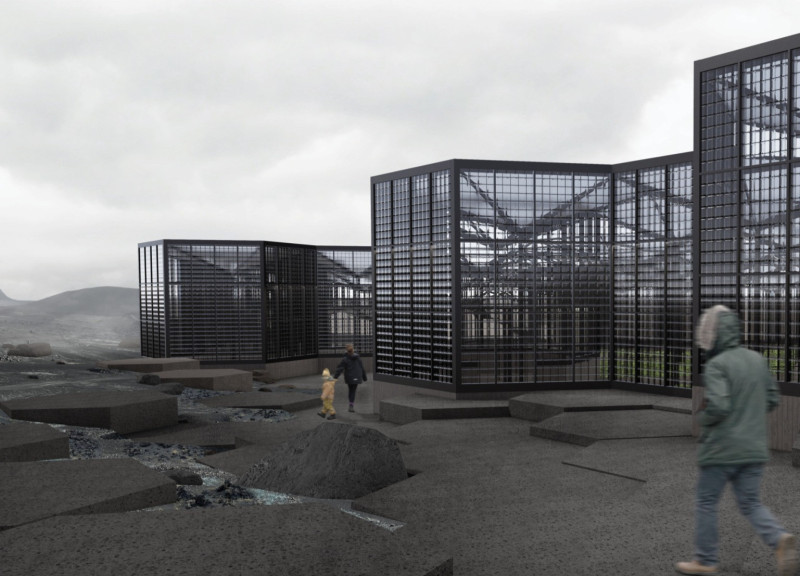5 key facts about this project
At its core, the CANOPY project is defined by its innovative architectural design. The structure’s use of hexagonal forms promotes not only an aesthetically pleasing appearance but also functional flexibility. This geometric choice captures and maximizes natural light, which is essential for the cultivation of various crops within the greenhouse. The design maximizes the exposure to sunlight while fostering an immersive environment for visitors. The terraced layout of the greenhouse, arranged in five distinct levels, allows for optimal growth conditions tailored to the specific needs of different plants, further enhancing its role as a space for sustainable agriculture.
One of the most significant features of the CANOPY project is its emphasis on natural materials and sustainable building practices. The choice of structural steel for the framework provides both strength and longevity, ensuring the building can withstand the variable Icelandic climate. Glass and polycarbonate panels serve as the primary materials for the greenhouse’s walls, allowing sunlight to flood into the interior while providing insulation. This careful selection of materials is complemented by concrete, which forms a robust base and reinforces the project's durability against the harsh volcanic surroundings. Additionally, the CANOPY project integrates rainwater collection systems, promoting responsible water use in a region characterized by fluctuating precipitation levels.
The design of the restaurant component complements the greenhouse, focusing on creating a space where diners can appreciate the beauty of the landscape while enjoying locally sourced food. Large windows provide panoramic views of the Myvatn area, bringing the outdoors inside and inviting guests to engage with the natural world. The interior design emphasizes a sense of warmth and connection to nature, which resonates with the overall mission of the CANOPY project. Rather than a standalone entity, the restaurant and greenhouse work in harmony, promoting an understanding of the food production process and contributing to community education about sustainable agricultural practices.
Unique design approaches are evident throughout the CANOPY project, particularly in its consideration of environmental factors and the local ecosystem. The hexagonal modules not only create a visually appealing architecture but also allow for the effective organization of space, which can adapt to various uses and visitor flows. By employing an organic, flowing path for circulation, the design encourages exploration, ensuring that visitors engage fully with the crops and the surrounding environment. This path enhances the sensory experience of the greenhouse, as it leads users through different growing areas, allowing for an experiential understanding of various plant species and their cultivation.
In summary, the CANOPY project stands as a notable example of contemporary architecture that prioritizes sustainability and community connection in its design. Its thoughtful integration with the volcanic landscape of Iceland, innovative use of materials, and commitment to providing an educational and immersive experience reflect the values inherent in modern architectural practice. For those interested in exploring the nuances of this project, delving into the architectural plans, sections, and detailed architectural designs can provide a deeper understanding of the innovative ideas that drive its conception. Reviewing these elements will offer valuable insights into how architecture can engage with and respect its environment.


























